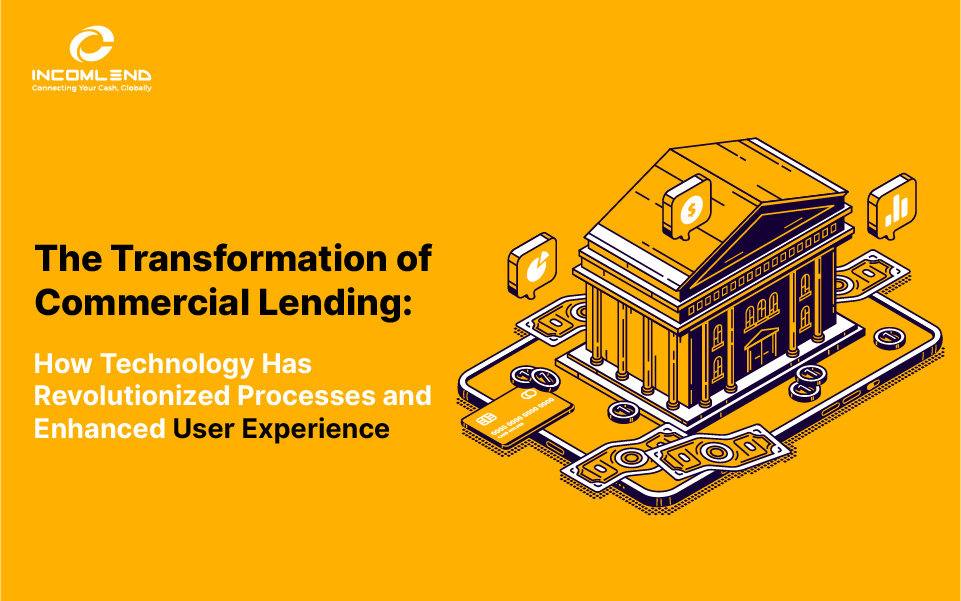The Transformation of Commercial Lending: How Technology Has Revolutionized Processes and Enhanced User Experience
August 15, 2023
In recent years, the commercial lending industry has undergone a profound transformation with the rapid integration of technology. As businesses continue to evolve and expand, so too have the demands for quick, efficient, and user-friendly lending processes. Technology has played a crucial role in meeting these demands, revolutionizing the way commercial lending is conducted. In this article, we will explore the impact of technology on commercial lending, focusing on how it has improved processes and user experience.
1. Streamlining Financing Applications
Traditionally, applying for a commercial loan involved arduous paperwork and prolonged processing times. However, with the advent of online platforms and digitized documentation, borrowers can now submit applications with ease and speed. Technology enables lenders to capture, organize, and analyze vast amounts of data, facilitating a more informed and accurate decision-making process. Advanced algorithms assess risk profiles, creditworthiness, and potential profitability, leading to faster loan approvals and increased efficiency. With Incomlend, for example, you can open a free account in few minutes.
2. Enhanced Data Analytics and Risk Assessment
Data analytics in commercial lending has been transformed by the use of technology. Big data can now be used by financial organisations to acquire extensive insights into borrower behaviour and market trends. Lenders can make better educated lending decisions by analysing past performance, cash flow estimates, and industry-specific parameters. This reduces risks and ensures loan sustainability. Real-time loan performance monitoring also enables lenders to take proactive efforts to address possible concerns as soon as they arise.
3. Automation of Routine Tasks
Many regular procedures that were once time-consuming and error-prone have been automated by technology. Back-office activities like as data entry, document verification, and compliance checks have considerably improved since the introduction of robotic process automation (RPA) and artificial intelligence (AI). Human resources are freed up to focus on more crucial areas of the loan process when these jobs are transferred to machines, enabling increased efficiency and accuracy.
4. Personalized Customer Experience
Lenders may now give a more personalised customer experience thanks to the inclusion of technology. CRM systems allow lenders to track interactions, preferences, and pain spots, allowing them to customise loan products and services to particular client needs. Furthermore, modern contact methods such as live chat and email support provide borrowers with rapid and accessible access to help, increasing overall satisfaction. Now is the time to try our live chat!
5. Improved Accessibility and Transparency
Technological advancements have made commercial lending more accessible to a broader audience. Online lending platforms and peer-to-peer lending have democratised access to financing, allowing SMEs to seek money outside of established banking channels. Furthermore, technology has increased transparency in the lending process by allowing borrowers to track the status of their loan applications in real time and receive extensive information on loan terms and conditions.
6. Efficient Credit Limits Assessment
Credit assessment, a critical aspect of the lending process, has seen significant improvements through the use of technology. Automated credit scoring models assess borrower creditworthiness with greater accuracy, considering various factors beyond traditional credit scores. By leveraging machine learning algorithms and technology, lenders can better predict default risks and tailor loan terms accordingly, striking a balance between profitability and risk management.
Conclusion
The integration of technology in commercial lending has undoubtedly revolutionized the industry, improving processes and user experience alike. From streamlined loan applications to enhanced data analytics, automation of routine tasks to personalized customer service, technology has paved the way for a more efficient and inclusive lending ecosystem. As technology continues to evolve, the commercial lending sector can expect further advancements, reinforcing its role as a catalyst for economic growth and prosperity. Nevertheless, it is crucial to strike a balance between technological innovation and human expertise, ensuring that the benefits of technology are harnessed responsibly and sustainably in the future.
